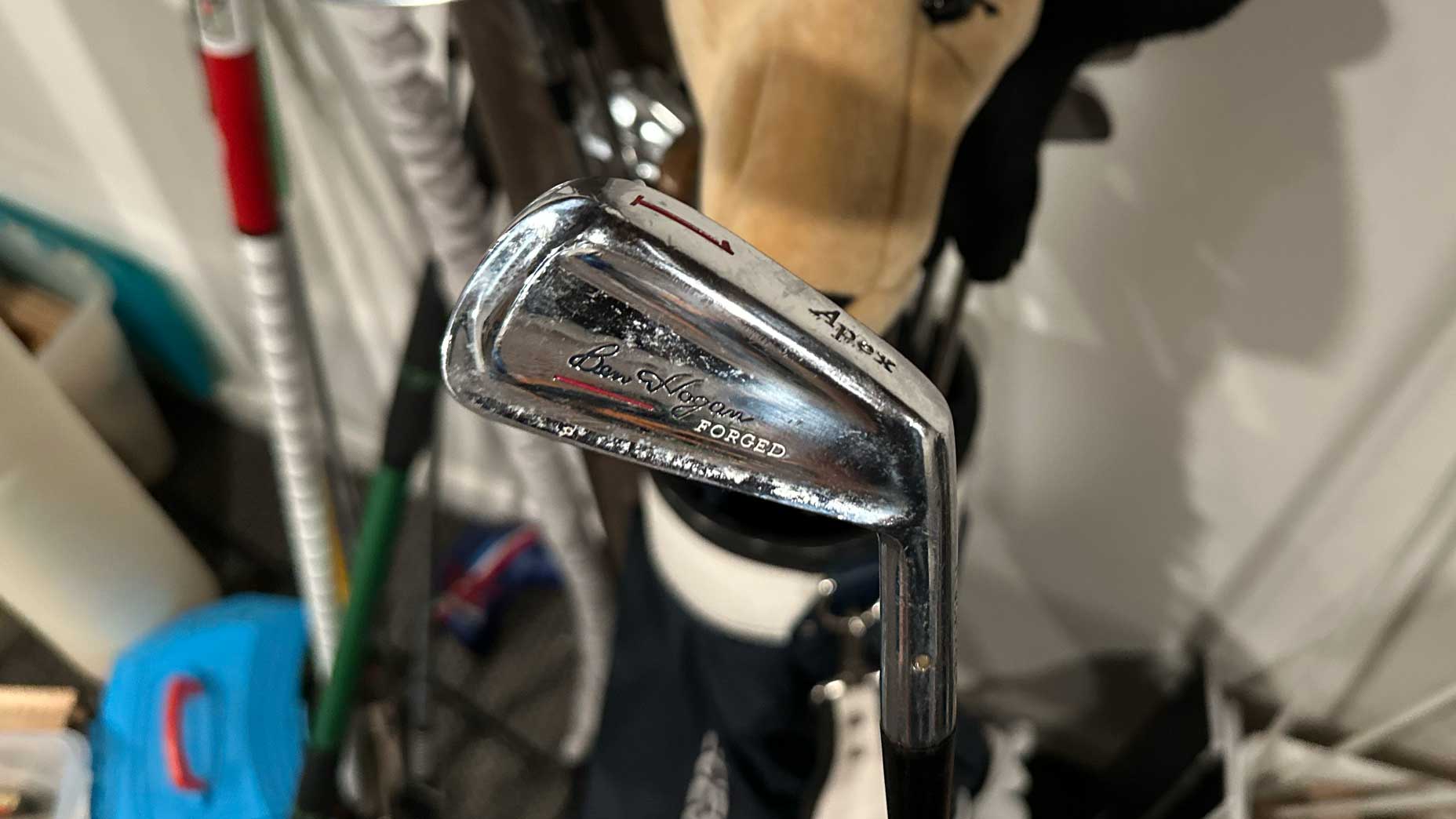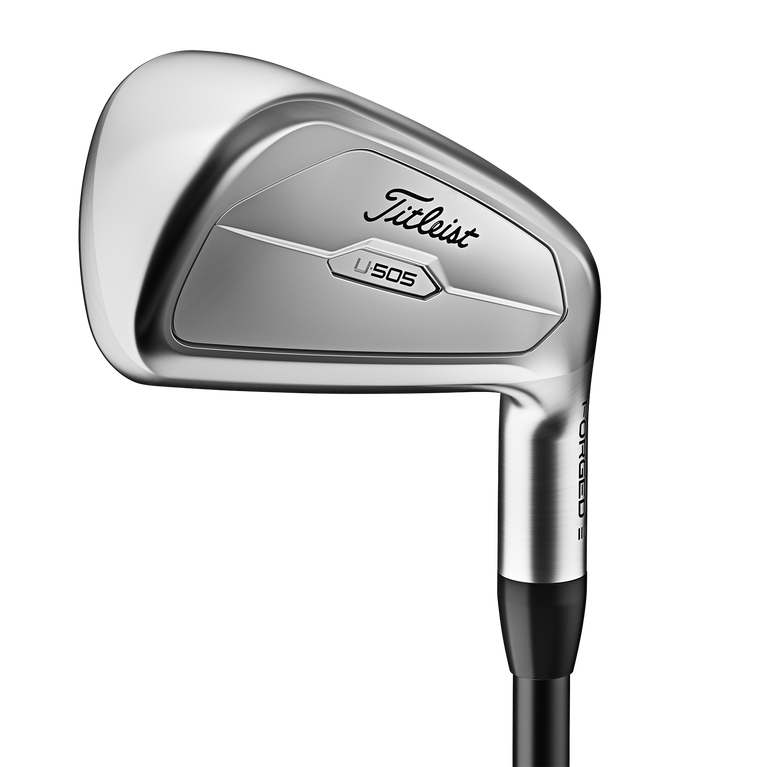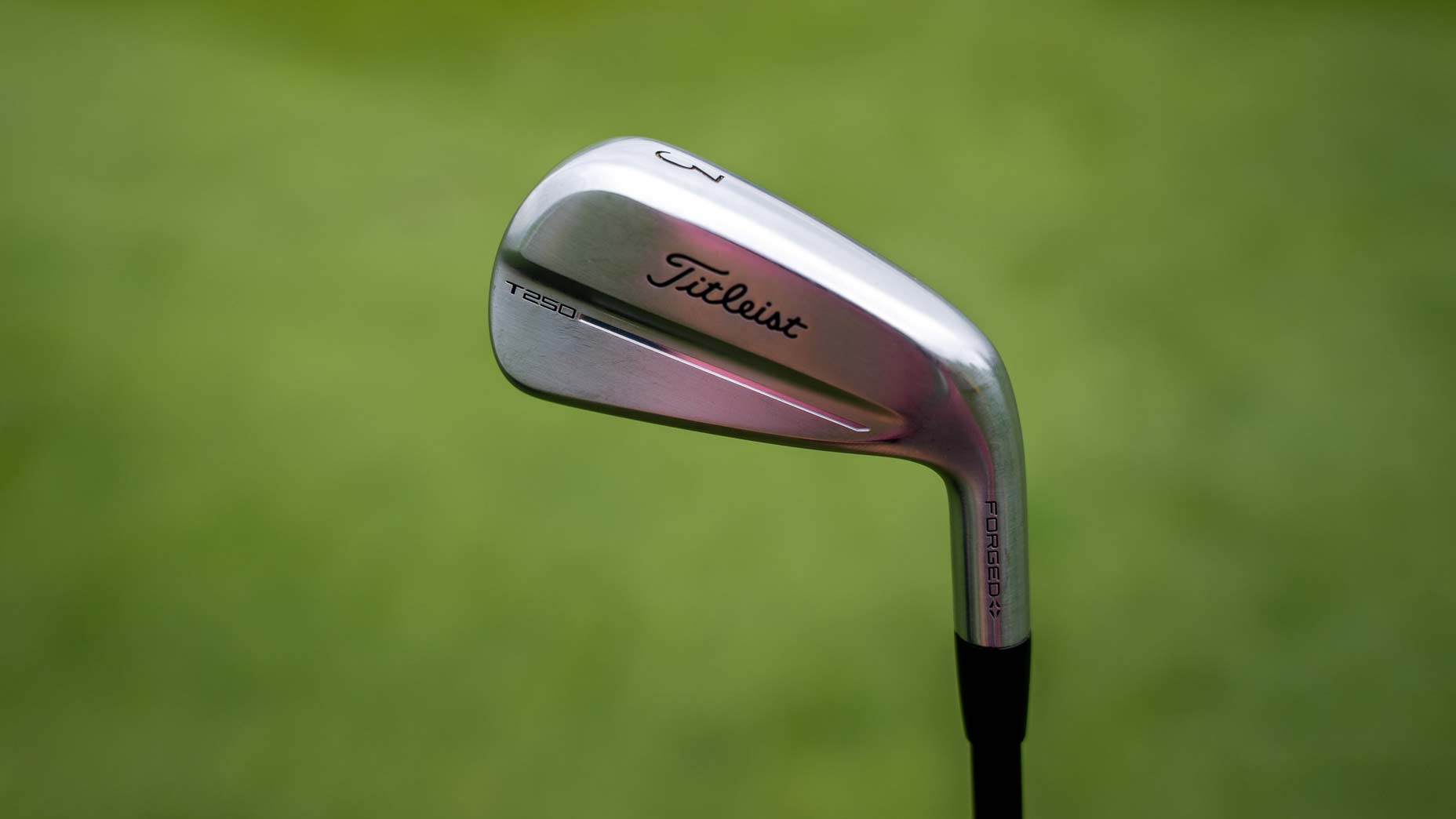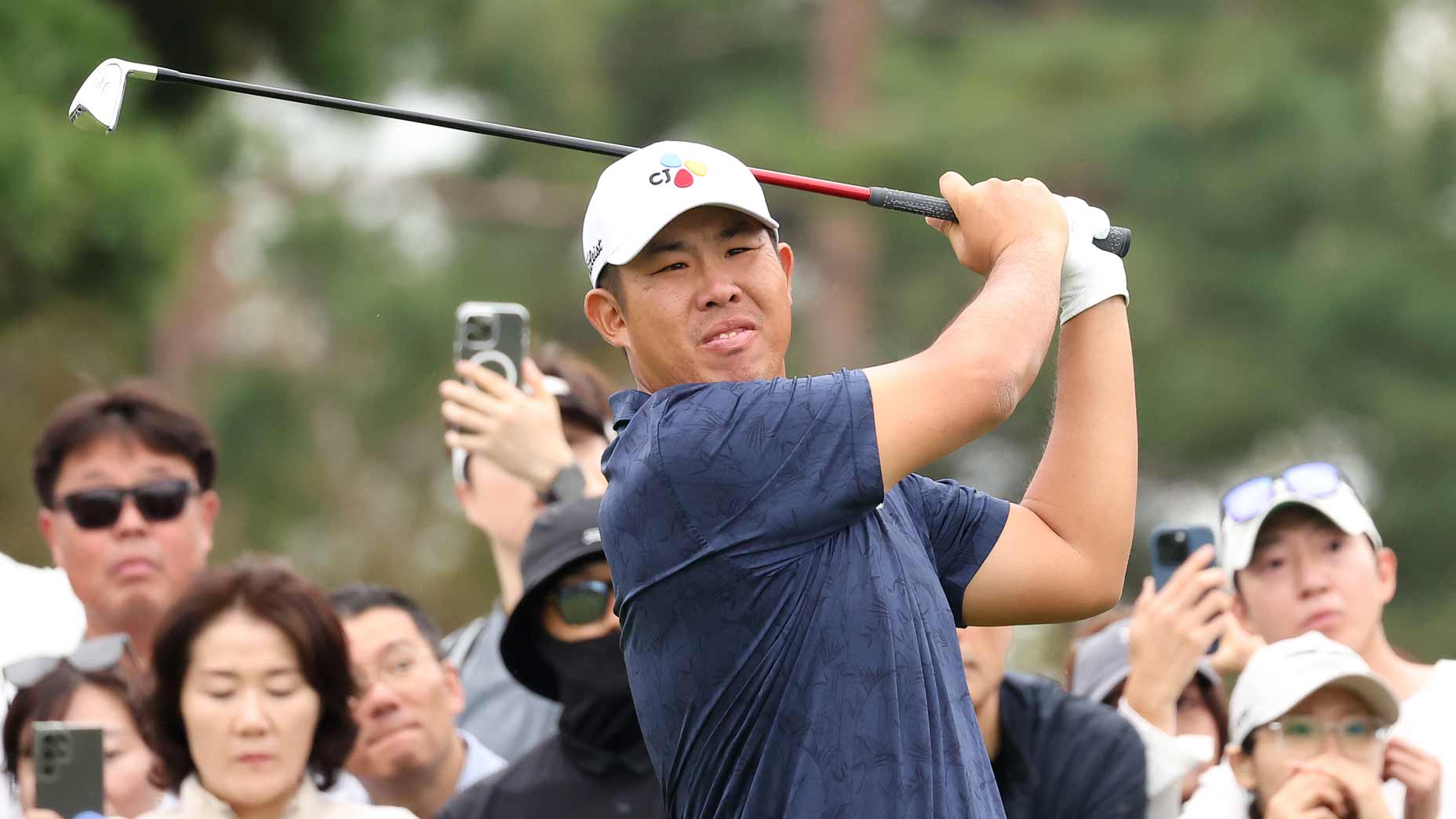Is the 1-iron having a renaissance on PGA Tour? Yes and no
Last week’s Genesis Scottish Open winner, Chris Gotterup, has a really awesome setup, but there was one club that jumped out to most casual fans:
A TaylorMade RSi TP UDI 16˚ 1-iron.
Yes, a 1-iron. While it might not be the tiny butter knife that Ben Hogan and Jack Nicklaus were famous for, the 10-year-old driving iron, equipped with the same KBS C-Taper 130 X iron shaft he has in the rest of his irons, just earned a win on the PGA Tour, years after the club type was thought extinct.
When the PGA Tour heads across the pond for the Scottish Open, Open Championship and all the elements with links golf, players often break out the utility irons and driving irons to keep the ball down off the tee. Some players are even considering the extremes.
It turns out, the 1-iron isn’t totally dead on the PGA Tour after all, but there are a few things we should clarify.
What is a 1-iron anymore?
At 28 years old, I can safely say I haven’t seen too many 1-irons amongst most of my contemporaries in tournament play — although I did get to play with former Open Championship winner Sandy Lyle in 2015 when he carried a Mizuno MP-H5 1-iron — but my dad has and played one himself back in the 70s, 80s and 90s.
Recently, we measured one of his old Ben Hogan Apex 1-irons and found it to have 18 degrees of loft. That was a 1-iron more than 25 years ago, but with higher launching and faster irons, it’s almost universally agreed upon that 18 degrees is a 2-iron by today’s standards.
In fact, several brands today, like Cobra, Ping and TaylorMade, even offer stock 2-irons at 17 degrees. Most consider 18 degrees a 2-iron, while a 3-iron can vary from 19-21 degrees depending on what iron set it’s trying to blend with — weaker for a more Tour-inspired iron set and stronger for a players distance set. While it’s rare to see a matching 3-iron on the PGA Tour, many still use utility 3-irons around 20 or 21 degrees.
Very few companies offer a 1-iron at retail. Titleist’s new U505 utility iron, as in previous generations, comes in a 16-degree, 1-iron loft option. Just last week, TaylorMade had a limited release of its 17-degree P-UDI driving iron. It’s normally branded as a 2-iron but was rebranded as a “Bomber” 1-iron with a new cosmetics package. It sold out in minutes.
View this post on Instagram
Mizuno’s head of product, Chris Voshall, also told me they do something interesting with their Mizuno Pro Fli-Hi utility irons. At retail, the 16.5-degree Fli-Hi is stamped as a 2-iron, because that’s what it is in a loft progression that matches the Mizuno Pro 245 Players distance irons, which have a 30-degree 7-iron.
But on their Tour truck, the same heads are stamped as 1-irons. Why? Because 16.5 degrees is clearly, and unequivocally, a 1-iron.
Today’s 1-irons are not the same
One major caveat with today’s 1-irons is that compared to my dad’s Ben Hogan Apex 1-iron, they are really hybrids.
Hybrids only became commonplace in the early 2000s, and hollow-bodied driving irons even later than that, so it’s not like they were an option back then. But the 1-irons Hogan, Nicklaus and Trevino used to play were the same as the rest of their irons.

There was no multi-material construction, perimeter weighting, ultra-thin faces, super wide soles, speed foam, low CGs or anything like that.
They were 1-piece forged blades, and Trevino famously joked, “If you are caught on a golf course during a storm and are afraid of lightning, hold up a 1-iron. Not even God can hit a 1-iron.”
Today’s 1-irons are very different. An example like the U505 has an ultra-wide sole and shallow face to help lower the CG of the club in conjunction with significant amounts of tungsten to get the ball up in the air.
On the flip side, TaylorMade’s P-UDI Bomber 1-iron (which only differs from the standard 2-iron in cosmetics and .25″ longer stock shaft length) is more compact and designed to hit lower stingers off the tee. But it still has loads of tech to make it more forgiving, like TaylorMade’s SpeedFoam inside the hollow body and 26g of tungsten weighting.
Titleist U505 Custom Driving Iron
View Product
Additionally, most of today’s 1-irons are shafted with modern, lighter graphite shafts to help increase speed and launch, unlike yesteryear when players simply used the same shaft as the rest of their sets.
These are still clubs designed for elite players, but I wouldn’t try Trevino’s strategy with these in a thunderstorm. God might be able to hit these ones.
What’s the benefit of a 1-iron in today’s game?
So many options exist to replace long irons today, like hybrids and high-lofted fairway woods, so why do they still exist?
The short answer is that, in the United States, where conditions often allow players to play shots through the air and stop them quickly on the ground, there isn’t much need for it. But in the UK, where firm ground and rumpled terrain require creative use of the ground, it’s a different story.
Of Tour players who use a 1-iron, the average Trackman numbers are roughly 6-8 degrees of launch, 157-165 mph ball speed and 3000-3500 RPMs of spin. That ball speed puts it on par with the average PGA Tour 4- or 5-wood.
The difference is launch angle, which is about 3-4 degrees lower than a fairway wood with about 500-1000 RPMs less spin, thus peak height is only about 50 to 60 feet, rather than 100 with a fairway wood.
That means the fairway wood will carry farther, but in the UK, where the turf is firmer, the 1-iron will go farther with roll out.
Then you factor in that the 1-iron ball stays closer to the ground and is less affected by the sea breezes at links courses, and the 1-iron starts to make a lot more sense.
Chris Gotterup’s 1-iron
Gotterup’s RSi TP UDI was originally released in 2015 and was offered at retail with the same 16-degree loft he had in the bag last week at the Scottish Open. Unlike many of today’s 1-irons, it’s shafted up with a KBS C-Taper 130 X, the same shaft as the rest of his irons.
View this post on Instagram
The main tech from then in the design is the hollow-bodied construction and TaylorMade’s SpeedPocket technology on the sole to help the face flex more, especially on low strikes. It also has an ultra-thin 455 Carpenter Steel face. This club was released before the first generation of the popular P-790 players distance irons, so SpeedFoam wasn’t a thing yet.
Gotterup joked he couldn’t reveal where the 10-year-old club originally came from, but he’s had it for a long time.
“We’ve been talking about the new stuff and I haven’t really liked the new stuff as much, but the old ones that I liked, they had one on the truck,” Gotterup said after his win Sunday. “You know, they gave me one.”
However, he said he only hit it a few times last week, and he’s been photographed testing a new TaylorMade P770 long iron this week at the Open despite saying he would keep the 1-iron in the bag for the rest of the season.
Who else plays a 1-iron on the PGA Tour?
While Gotterup’s 1-iron is rare on the PGA Tour, it’s far from a unicorn.
The last player to win on the PGA Tour with a 1-iron in the bag was only four years ago when Phil Mickelson became the oldest major champion at the 2021 PGA Championship. Ironically, Mickelson cracked the face of his Callaway 16-degree Callaway X Forged UT on the range Sunday just before his tee time and replaced it with a 4-wood. So while he had the 1-iron in the bag, it was only for three rounds.
The most noted 1-iron user on the PGA Tour today is Byeong Hun An, who has played a Titleist U505 1-iron as his 3-wood for over two years now.
“I hit it high enough, I have enough speed, I have enough spin rates,” An said in a Titleist YouTube video last year, “so why not try to build that iron that has really low loft, so I can hit it straighter off the tee? Because that’s the whole purpose of using the 3-wood.
“A lot of people are surprised by how high I can hit this one, and it’s been a great club off of the tee. I can hit it low, maybe 20, 30 feet off the ground up to like 120 feet off the ground.”
An upgraded to the newest generation U505 earlier this year and Justin Thomas tested the U505 1-iron last week at the Scottish before sticking with his trusty 915d 5-wood. Danny Walker also had a previous generation U505 in his bag during practice rounds, according to SMS on Tour, which records club usage on the DP World Tour.
Guido Migliozzi put in TaylorMade’s P-UDI Bomber last week, and Collin Morikawa tested it but didn’t game it. Tommy Fleetwood is testing the new butter knife for this week.
Mizuno has DP World Tour staffers Marco Penge (who finished T2 last week in Scotland) and Adrien Saddier with Mizuno Pro Fli-Hi 1-irons in the bag at the Open.
It seems last week at The Renaissance Club, there were plenty of 1-irons floating around in bags, but only a few actually went in play. The mood is this week at Portrush, even fewer 1-irons will be in play come Thursday.
So the 1-iron is far from dead on the modern PGA Tour, but to say the club is having a renaissance? That depends on your personal definition of a 1-iron.
The photo of Chris Gotterup’s 1-iron was taken by SMS on Tour. Check out their new website at smsontour.com.
Want to find the best driving iron for your game in 2025? Find a club-fitting location near you at True Spec Golf.
The post Is the 1-iron having a renaissance on PGA Tour? Yes and no appeared first on Golf.



